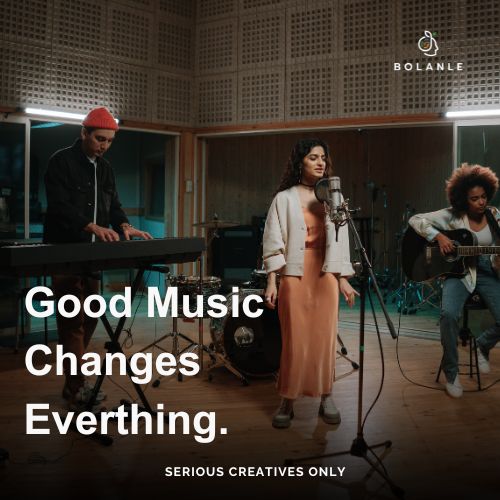Advice
Reinventing Genres: Tips for Filmmakers

Genres offer filmmakers a blueprint for storytelling, but they can also become predictable if followed too rigidly. To stand out and captivate modern audiences, filmmakers increasingly experiment with genre conventions, blending or subverting established norms to deliver fresh and surprising experiences. However, breaking the mold comes with its own set of challenges. Here’s how you can navigate the evolution of genre to create something truly original.
1. Understand the Rules Before Breaking Them
Before subverting genre conventions, you need a deep understanding of them. Audiences have expectations tied to genres—romances promise emotional connections, while horror builds tension and fear. Knowing these tropes allows you to decide which to keep, tweak, or completely upend to create impactful surprises.
Actionable Tip: Study successful genre films to identify their core conventions. For instance, in horror, the “final girl” trope often symbolizes survival. If you’re creating a horror film, consider flipping the trope by making the “final girl” the antagonist.
2. Blend Genres to Add Depth
Blending genres is an effective way to challenge expectations while broadening a story’s appeal. Films like Get Out seamlessly mix horror and social commentary, while Shaun of the Dead combines comedy with zombie horror. These hybrids resonate because they respect the essence of each genre while delivering something unexpected.
Actionable Tip: Identify the emotional beats of your primary genre, then layer in secondary elements. For instance, a drama can incorporate sci-fi elements to explore human relationships in a futuristic setting, like Her did.
3. Subvert Character Archetypes
Audiences often anticipate specific character types within genres, such as the heroic protagonist in action films or the wise mentor in fantasy. Subverting these archetypes can result in compelling narratives. For example, Knives Out turns the classic whodunit genre on its head by revealing key plot points early, making the journey more about “why” than “who.”
Actionable Tip: Write character profiles for your leads and supporting cast, then challenge their roles. Can the villain be sympathetic? Could the mentor be unreliable? By defying expectations, you add complexity and intrigue.
4. Leverage Visual and Tonal Shifts
Genres often carry distinct visual and tonal markers—romantic comedies are bright and cheerful, while noir is dark and brooding. Playing with these elements can surprise audiences and enrich your narrative. For example, Parasite starts as a dark comedy but shifts into thriller territory, creating an emotionally charged experience.
Actionable Tip: Experiment with lighting, color palettes, and sound design to transition between tones or disrupt visual expectations. A colorful, vibrant world juxtaposed with a dark storyline, like in Jojo Rabbit, can create a striking contrast.
5. Balance Risk and Reward
Subverting genre expectations is a bold move, but it risks alienating audiences who expect familiarity. The key is to maintain a balance: innovate while staying true to the core emotional journey that the genre promises. For example, Mad Max: Fury Road redefined action films by focusing on relentless momentum while keeping the stakes and emotional arcs clear.
Actionable Tip: Test your story with trusted collaborators or small audiences. Gauge their reactions to ensure your subversions enhance the experience rather than confuse or frustrate viewers.

6. Reinvent Timeless Themes
While genres evolve, their core themes—love, fear, ambition, or survival—remain timeless. By addressing these universal themes in innovative ways, you can create works that feel fresh yet deeply relatable. A film like The Shape of Water reinvents the romance genre by pairing a mute woman with an amphibious creature, blending fantasy with profound emotional depth.
Actionable Tip: Start with a universal theme, then brainstorm unique ways to explore it. For example, instead of a typical hero’s journey, could your story revolve around a collective effort or an antihero’s quest?
7. Learn from Genre Masters Who Break the Mold
Many groundbreaking filmmakers have pushed genre boundaries, creating new storytelling paradigms. Directors like Jordan Peele, Bong Joon-ho, and Greta Gerwig challenge conventions without losing sight of the emotional core of their stories. Studying their techniques can inspire your own creative choices.
Actionable Tip: Analyze a few genre-bending films and dissect how they challenge norms. What tropes did they keep or discard? How did they maintain emotional resonance while experimenting? Apply these insights to your project.
Final Thoughts: Evolving Genre with Purpose
Subverting or blending genres isn’t about discarding traditions—it’s about evolving them to reflect contemporary sensibilities. By understanding the essence of genres and pushing their boundaries thoughtfully, you can craft stories that surprise, engage, and resonate deeply with audiences. The key is to innovate without losing sight of the emotional truths that make genres timeless.
Bolanle Media is excited to announce our partnership with The Newbie Film Academy to offer comprehensive courses designed specifically for aspiring screenwriters. Whether you’re just starting out or looking to enhance your skills, our resources will provide you with the tools and knowledge needed to succeed in the competitive world of screenwriting. Join us today to unlock your creative potential and take your first steps toward crafting compelling stories that resonate with audiences. Let’s turn your ideas into impactful scripts together!
Advice
Why Your Phone Videos Look FLAT

Modern smartphones offer incredible video capabilities, but sometimes the footage can look flat, lacking depth and vibrancy. This article explores five practical tips to elevate your phone videos, with a focus on lighting techniques like bounce lighting and natural light, as well as using the highest quality settings available.
1. Optimize Lighting: Bounce Lighting and Natural Light
Lighting is one of the most critical factors in creating visually appealing videos. Here are two effective techniques:
- Bounce Lighting: Bounce light involves redirecting light off a surface (e.g., walls, ceilings, or reflectors) to create soft, diffused illumination. This technique avoids harsh shadows and gives your subject a natural, cinematic glow. For example, bouncing light off the ceiling turns the entire surface into a softbox, wrapping light around your subject evenly. This method works well in small spaces or when you lack expensive modifiers.
- Natural Light: Leveraging daylight is an easy and cost-effective way to enhance your videos. Position your subject facing a window or shoot during golden hours (early morning or late afternoon) for flattering, warm tones. Avoid direct sunlight as it can create harsh shadows; instead, opt for diffused natural light for a balanced look.
2. Shoot in the Highest Quality Available
Always set your smartphone camera to its maximum resolution and frame rate. For example:
- Resolution: Use 4K for sharp details.
- Frame Rate: Choose 30fps for standard motion or 60fps for smoother movement.
Higher-quality settings capture more detail and color information, making post-production adjustments easier.

3. Improve Composition
A well-composed shot adds depth and interest to your videos:
- Use the rule of thirds to position your subject off-center.
- Incorporate foreground and background elements to create layers.
- Avoid cluttered backgrounds that distract from the main subject.
4. Stabilize Your Shots
Shaky footage can ruin the professional feel of your video:
- Use a tripod for static shots.
- Invest in a gimbal or stabilizer for smooth motion during handheld filming.
5. Enhance Color and Contrast in Post-Production
Even with perfect lighting and composition, flat videos may need color grading:
- Adjust contrast to add depth.
- Fine-tune saturation and vibrance to make colors pop without oversaturation.
- Use LUTs (Look-Up Tables) designed for mobile footage to achieve cinematic color profiles.
Conclusion
Flat phone videos often result from poor lighting, low-quality settings, or lack of post-production enhancements. By using techniques like bounce lighting, maximizing natural light, shooting in high resolution, stabilizing your shots, and refining colors in editing software, you can transform dull footage into vibrant, professional-looking videos.
Bolanle Media covers a wide range of topics, including film, technology, and culture. Our team creates easy-to-understand articles and news pieces that keep readers informed about the latest trends and events. If you’re looking for press coverage or want to share your story with a wider audience, we’d love to hear from you! Contact us today to discuss how we can help bring your news to life
Advice
How to Create Scenes That Resonate and Spread

Creating a scene that resonates with audiences and achieves virality is a goal for many filmmakers. A perfect example of this is the iconic “Are you gay?” scene from the movie “For Colored Girls?” (2010), starring Janet Jackson. This scene, featuring a direct and unexpected question, has lived on in popular culture, sparking countless memes and discussions.
So, what are the elements that make a scene stick and spread? Let’s break down key strategies, drawing inspiration from this memorable moment:
1. Embrace Authenticity and Raw Emotion
The power of the “Are you gay?” scene lies in its raw authenticity. The question, posed by Patricia, played by Janet Jackson (IMDb), is delivered with a piercing directness that cuts through typical conversational niceties. Gavin, portrayed by Malik Yoba (IMDb), responds with palpable shock and discomfort. This genuine emotional exchange, even within a fictional context, creates a relatable and compelling moment for viewers.

2. Build Tension and Suspense
Before the pivotal question, the scene simmers with unspoken tension. The dialogue hints at underlying conflicts and secrets, creating an atmosphere of suspense. This buildup is crucial. By carefully layering tension, you amplify the impact of the key moment when it arrives. Consider using techniques such as:
- Subtext: Imply conflict through veiled language and body language.
- Pacing: Control the rhythm of the scene to heighten anticipation.
- Dramatic Irony: Let the audience know something the characters don’t.
3. The Power of the Unexpected
The “Are you gay?” question is so effective because it’s unexpected. It disrupts the flow of the conversation and catches both the character and the audience off guard. Introduce unexpected elements to jolt your audience and make your scene unforgettable. This could be a surprising plot twist, an unconventional line of dialogue, or a sudden shift in tone.
4. Relatability and Social Commentary
While the specific scenario in “For Colored Girls?” might not be universally relatable, the underlying themes of truth, identity, and relationships are. Viral scenes often tap into broader social issues or universal human experiences. By embedding your scene within a relevant social context, you increase its potential to resonate with a wider audience.
5. Visual Storytelling and Composition
While dialogue is crucial, don’t underestimate the power of visual storytelling. The framing, camera angles, and overall visual composition can significantly enhance the emotional impact of a scene.

6. Call to Action & Shareability
In today’s digital age, a scene’s potential for virality is amplified by its shareability. Create moments that are easily quotable, meme-able, or remixable. This encourages viewers to share the scene with their networks, expanding its reach exponentially.
By incorporating these elements into your filmmaking, you can increase your chances of creating scenes that not only resonate with audiences but also have the potential to spread and become cultural touchstones. For more advice and insights on filmmaking, visit Bolanlemedia.com in the advice article section.

Bolanle Media covers a wide range of topics, including film, technology, and culture. Our team creates easy-to-understand articles and news pieces that keep readers informed about the latest trends and events. If you’re looking for press coverage or want to share your story with a wider audience, we’d love to hear from you! Contact us today to discuss how we can help bring your news to life
Advice
Common Mistakes to Avoid When Networking in the Film Industry

Networking in the film industry is essential for building relationships and advancing your career, but it’s also easy to make missteps that can harm your reputation or alienate potential collaborators. Here are some of the most common mistakes to avoid and tips to ensure your networking efforts are effective:

1. Being Too Pushy or Self-Centered
One of the quickest ways to ruin a connection is by aggressively pitching your projects or dominating conversations. Nobody enjoys being cornered by someone who only talks about themselves. Instead, focus on building genuine connections by asking thoughtful questions like, “What inspired you to work on [specific project]?” Show interest in their work, and let the conversation flow naturally. Networking is a two-way street—make sure you’re giving as much as you’re hoping to receive.
2. Neglecting Follow-Ups
You’ve had a great conversation with someone at a festival or event, but then… radio silence. Failing to follow up is one of the biggest missed opportunities in networking. A simple email or message thanking them for their time and referencing something specific from your conversation can make a lasting impression. For example: “It was great meeting you at [event]! I really enjoyed hearing about your approach to [topic]. Let’s stay in touch—I’d love to collaborate someday.”
3. Talking Shop Constantly
While it’s tempting to dive into discussions about your latest screenplay or directing project, obsessively talking about work can come off as transactional and boring. People want to connect on a human level first. Engage in casual conversations about shared interests, current events, or even favorite films. For instance, “What did you think of [film that screened at the festival]?” can be a great icebreaker that leads to deeper discussions.

4. Overusing Flattery
Compliments are great—when they’re genuine. But excessive flattery or trying too hard to impress someone can feel manipulative and insincere. Instead of saying, “You’re the greatest producer I’ve ever met!” try something more specific and authentic like, “I really admire how you handled [specific challenge] in your last project—it was inspiring.” People appreciate thoughtful praise over empty words.
5. Not Respecting Boundaries
Networking is about mutual respect, and that means recognizing when someone isn’t interested or needs space. Avoid interrupting conversations, monopolizing someone’s time, or following them around at an event like a shadow. If someone seems busy or disengaged, politely excuse yourself and move on—it’s better to leave on good terms than risk becoming a nuisance.

6. Forgetting Integrity
Your reputation in the film industry is everything, so always do what you say you will do. If you promise to send over your reel or introduce someone to a colleague, follow through promptly. Reliability builds trust and shows that you value others’ time and effort. Conversely, failing to deliver on promises can quickly erode relationships and harm your credibility.
7. Overlooking Peer Connections
Don’t make the mistake of focusing only on high-profile contacts while neglecting peers who are at similar stages in their careers. Many successful collaborations come from horizontal networking—connecting with fellow emerging filmmakers who share your passion and vision. These relationships often grow into long-term partnerships that benefit everyone involved.
8. Being Unprepared
Showing up unprepared—whether it’s not knowing anything about the person you’re speaking with or failing to have business cards or a polished pitch—can waste both your time and theirs. Research key attendees beforehand, prepare a concise introduction about yourself, and have links to your portfolio ready if needed.
Final Thoughts
Networking in the film industry is all about authenticity, respect, and meaningful interactions—not just handing out business cards or pitching projects nonstop. By avoiding these common mistakes—such as being overly pushy, neglecting follow-ups, or failing to respect boundaries—you can build lasting relationships that support your creative journey and open doors to exciting opportunities. Remember: networking isn’t just about what others can do for you; it’s about creating connections that benefit everyone involved!
Bolanle Media covers a wide range of topics, including film, technology, and culture. Our team creates easy-to-understand articles and news pieces that keep readers informed about the latest trends and events. If you’re looking for press coverage or want to share your story with a wider audience, we’d love to hear from you! Contact us today to discuss how we can help bring your news to life

 News15 hours ago
News15 hours agoAre Hotel Chains Turning a Blind Eye? Women Targeted as Staff Hand Over Room Keys to Predators

 News15 hours ago
News15 hours agoShannon Sharpe Accused of Rape—Ex-Girlfriend Sues for $50 Million

 News18 hours ago
News18 hours agoAre Gen Zers Losing the Art of Friendship? Here’s What Research Says

 Tech22 hours ago
Tech22 hours agoHow to Get a Google AI Certificate for Free

 World News2 days ago
World News2 days agoWhich Cardinal Could Become the Next Pope?

 Spotlight3 days ago
Spotlight3 days agoHonoring Nina Simone’s Legacy on Her Memorial Day

 Business & Money4 days ago
Business & Money4 days agoThe Collapse of Western Luxury Sales in China and the Rise of Local Brands

 Health4 days ago
Health4 days agoWhy Does Gen Z Look Like They’ve Seen 10 Seasons of Life Already?


































